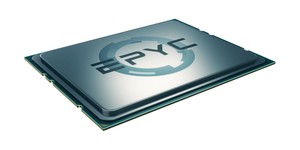Intel invests in China with Smart Devices venture
April 2, 2014 | 14:29
Companies: #arm #china #intel #intel-capital

Intel is continuing its push into the it'll-take-off-any-day-now-honest wearable computing market with a major investment in China, founding a Smart Device Innovation Centre backed by a $100 million fund from Intel Capital.
That Intel is focusing heavily on low-power embedded systems for wearable computing is no secret. Having been caught on the hop with the mobile computing boom, allowing Cambridge-based rival ARM to gain an overwhelming majority market share, the company is adamant it won't make the same msitake twice. In September last year, Intel Capital invested in Recon Instruments, Intel proper recently picked up Basis Science, and the Quark processor and Edison computer-on-module are clearly designed for low-power ultra-compact computing.
Now, chief executive Brian Krzanich has announced a new plan to push its low-power and wearable computing efforts still further with a little help from Shenzen. Announced at the company's Chinese Developer Forum today, a new deal will see the company establish the Intel Smart Device Centre in Shenzen and introduce a $100 million Intel Capital China Smart Device Innovation Fund to encourage the use of Intel products in future low-power devices.
'The China technology ecosystem will be instrumental in the transformation of computing, claimed Krzanich in his speech. 'To help drive global innovation, Intel will stay focused on delivering leadership products and technologies that not only allow our partners to rapidly innovate, but also deliver on the promise that "if it computes, it does it best with Intel" – from the edge device to the cloud, and everything in between.'
Krzanich also announced the launch of the awkwardly-named Intel Gateway Solutions for the Internet of Things, a router based on Intel's Quark and Atom chips for connecting low-power wearable and embedded sensors to a network, and demonstrated for the first time his company's SoFIA integrated mobile system-on-chip design, an all-in-one chip for smartphones and tablets with which Intel hopes to challenge ARM's dominance.
That Intel is focusing heavily on low-power embedded systems for wearable computing is no secret. Having been caught on the hop with the mobile computing boom, allowing Cambridge-based rival ARM to gain an overwhelming majority market share, the company is adamant it won't make the same msitake twice. In September last year, Intel Capital invested in Recon Instruments, Intel proper recently picked up Basis Science, and the Quark processor and Edison computer-on-module are clearly designed for low-power ultra-compact computing.
Now, chief executive Brian Krzanich has announced a new plan to push its low-power and wearable computing efforts still further with a little help from Shenzen. Announced at the company's Chinese Developer Forum today, a new deal will see the company establish the Intel Smart Device Centre in Shenzen and introduce a $100 million Intel Capital China Smart Device Innovation Fund to encourage the use of Intel products in future low-power devices.
'The China technology ecosystem will be instrumental in the transformation of computing, claimed Krzanich in his speech. 'To help drive global innovation, Intel will stay focused on delivering leadership products and technologies that not only allow our partners to rapidly innovate, but also deliver on the promise that "if it computes, it does it best with Intel" – from the edge device to the cloud, and everything in between.'
Krzanich also announced the launch of the awkwardly-named Intel Gateway Solutions for the Internet of Things, a router based on Intel's Quark and Atom chips for connecting low-power wearable and embedded sensors to a network, and demonstrated for the first time his company's SoFIA integrated mobile system-on-chip design, an all-in-one chip for smartphones and tablets with which Intel hopes to challenge ARM's dominance.

MSI MPG Velox 100R Chassis Review
October 14 2021 | 15:04








Want to comment? Please log in.